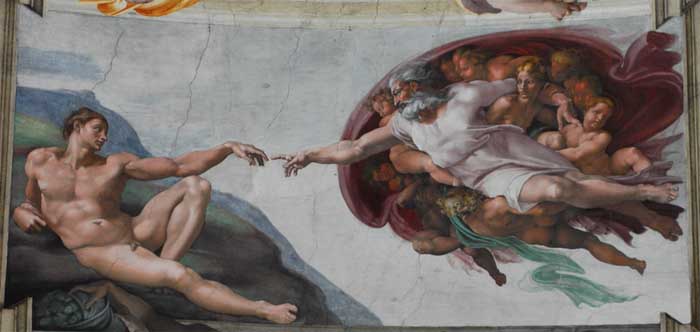

A creation myth is a symbolic narrative of how the world began and how people first came to inhabit it.They develop in oral traditions and therefore typically have multiple versions; and they are the most common form of myth, found throughout human culture.
In the society in which it is told, a creation myth is usually regarded as conveying profound truths, metaphorically, symbolically and sometimes even in a historical or literal sense. They are commonly, although not always, considered cosmogonical myths - that is they describe the ordering of the cosmos from a state of chaos or amorphousness.
Creation myths often share a number of features. They often are considered sacred accounts and can be found in nearly all known religious traditions. They are all stories with a plot and characters who are either deities, human-like figures, or animals, who often speak and transform easily. They are often set in a dim and nonspecific past, what historian of religion Mircea Eliade termed in illo tempore ("at that time"). Also, all creation myths speak to deeply meaningful questions held by the society that shares them, revealing of their central worldview and the framework for the self-identity of the culture and individual in a universal context.
All creation myths are in one sense etiological because they attempt to explain how the world was formed and where humanity came from. While in popular usage the term "myth" is often thought to refer to false or fanciful stories, creation myths are by definition those stories which a culture accepts as both a true and foundational account of their human identity. Ethnologists and anthropologists who study these myths point out that in the modern context theologians try to discern humanity's meaning from revealed truths and scientists investigate cosmology with the tools of empiricism and rationality, but creation myths define human reality in very different terms.
In the past historians of religion and other students of myth thought of them as forms of primitive or early-stage science or religion and analyzed them in a literal or logical sense. However they are today seen as symbolic narratives which must be understood in terms of their own cultural context. Charles H. Long writes, "The beings referred to in the myth -- gods, animals, plants -- are forms of power grasped existentially. The myths should not be understood as attempts to work out a rational explanation of deity."
While creation myths are not literal explications they do serve to define an orientation of humanity in the world in terms of a birth story. They are the basis of a worldview that reaffirms and guides how people relate to both the spiritual and natural world as well as to each other.
The creation myth acts as a cornerstone for distinguishing primary reality from relative reality, the origin and nature of being from non-being. In this sense they serve as a philosophy of life but one expressed and conveyed through symbol rather than systematic reason. And in this sense they go beyond etiological myths which mean to explain specific features in religious rites, natural phenomena or cultural life. Creation myths also help to orient human beings in the world, giving them a sense of their place in the world and the regard that they must have for humans and nature.